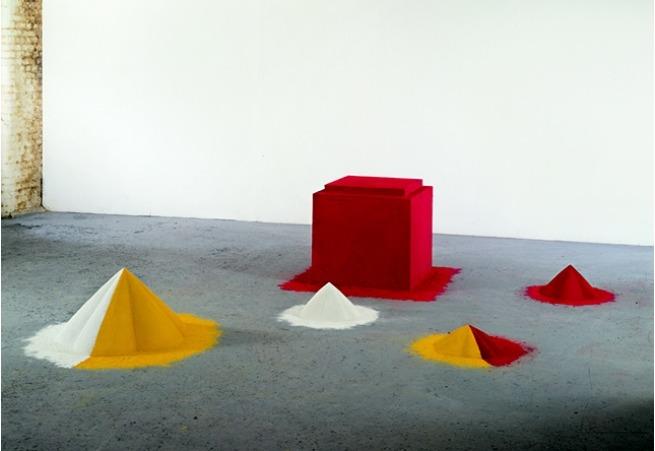Published in Broadsheet, January 2013
Anish Kapoor’s new exhibition at the MCA proves that the pull of irony is no match for the power of poetry.
There’s a brand of contemporary art that can make you feel clever just by being in its presence. The kind of cool, cloying work that helps you master your world by recasting your deepest experiences in an ironic glaze.
And then there’s the type of contemporary art that’s so visceral, it makes you feel like your insides are on show. When you stand before it, it unravels you to the point that you’re not sure what form you took before.
When Anish Kapoor won the Turner Prize back in 1991, his sculptures displayed a deeply unfashionable fascination with interiority – a kind of poetic mysticism that’s the antithesis of work by contemporaries such as Tracey Emin and Damien Hirst. But when you visit Kapoor’s new show at the MCA, it’s clear that the pull of irony is no match for the power of poetry, the way that art which trades in the abstract can manage to hit you where it hurts.
“I’m not that interested in doing retrospectives,” says Kapoor, when speaking of the exhibition. “I wanted this show to be a kind of survey that would allow for the development of certain ideas. I wanted it to include the pigment works that touch on a few ideas that are fundamental to me, like the notion of the object without the hand, generated by its own volition and the idea of colour as materialist stuff as well as the object that isn’t what it describes itself to be. Pieces that are somewhere between illusion and the real thing.”
Kapoor’s first major Australian exhibition invites viewers to inhabit the shadowy realm between the illusory and the material, to cast aside the limits of the body and let self and object blur. At first glance, My Body Your Body (1993) appears to be a flat rectangle rendered in iridescent blue. As you move closer, it takes the form of an abyss in what becomes a gentle unfurling of perception and space. Elsewhere,Void (1989) induces this same sense of subtle vertigo. The concave sculpture is both thoroughly pleasurable and highly immersive, couching the promise of sensual abandon in the terror of falling too deep.
“I think that’s what great art does,” offers Liz-Ann Macgregor, MCA director and exhibition curator. “It transcends the description of the materiality and the colour. Something happens between the viewer and the work, and it’s magical. It pulls you in, it pulls something out of you and it makes you have this reaction. And it’s powerfully visual.”
Kapoor might have an aptitude for visual trickery but it’s dangerous to dismiss him as a showman. 1000 Names (1979–80), a tableau of geometric forms created via radiant powdered pigment, eschews optical illusion in favour of emotional simplicity. Created following a trip to India and inspired by the notion of ritual, the sculpture is highly personal and deeply moving.
Not that Kapoor, who was born in Mumbai but studied and works in London, has any interest in letting his work serve as a vehicle for personal narrative.
“There are so many artists who see it as their mission in a way to do only what all of us can do and only do as human beings,” he contends. “To rely if you like on our psychobiography, because all we have is birth and death and all the stuff in between. But I feel, somehow or the other, that psychobiography seems to limit what it’s possible to do poetically, and that though you can’t avoid this, I feel like it’s not necessary to place all our emphasis on it.”
Kapoor is vehement about rejecting the mantle of confession and representation. “I put a lot of emphasis on the idea that I have nothing to say as an artist, and I do have nothing to say. Maybe making work is about the process of getting those things out of the way, so we can make room for everything else.”
But you get the feeling that meaning is rarely static in Anish Kapoor’s world. To connect with art, it has to resonate with our truth, form a bridge between the artist’s experience and our own. My Red Homeland(2003), the sprawling, viscous mass of wax that occupies the MCA’s expansive level one gallery, does exactly this. It’s blood, guts, viscera, home – your insides wrought in a formless explosion.
“Art is good at something we call intimacy,” Kapoor says. “It’s good at saying ‘Come over here and come and be part of this’. Sculpture in particular, the work doesn’t work from over there, it works from over here. It demands a personal engagement and maybe that’s something that we all want and need.”
Anish Kapoor shows at the MCA until April 1.
